General Information
Strain Name | Hu-URG |
Origin | Beijing Vitalstar Biotechnology Co., Ltd. |
Background | URG |
Coat color | Albino |
Development
Transplanting primary human hepatocytes into the liver of doxycycline (Dox)-induced URG® mice results in humanized liver mice (Hu-URG). Hu-URG mice are obtained by mating four types of genetically modified animal models, including two transgenic and two gene knockout models. The construction method is as follows:
Firstly, TRE-uPA transgenic mice are mated with Alb-rtTA transgenic mice to obtain Alb-rtTA/TRE-uPA double-positive mice. Upon Dox induction, uPA expression and liver injury are detected in these mice [1]. Secondly, Alb-rtTA/TRE-uPA double-positive mice are backcrossed for eight generations onto the NRG (NOD background Rag2nullIl2rgnull mice) background, resulting in Alb-rtTA/TRE-uPA/Rag2null/Il2rgnull mice (URG®). Lastly, transplanting primary human hepatocytes into the Dox-induced URG® mouse liver yields the humanized liver mice Hu-URG®, with no restrictions on the transplantation window period.
When Hu-URG® mice are not induced, uPA is not expressed, and the mice grow healthily; when induced with Dox, the Tet-On system drives uPA expression in the liver, leading to liver injury in the mice. As a new generation of inducible liver injury humanized liver mouse model [2-6], human liver cells can achieve 20-95% whole liver regeneration.
Phenotype
1. The content of blood lipids and related proteins

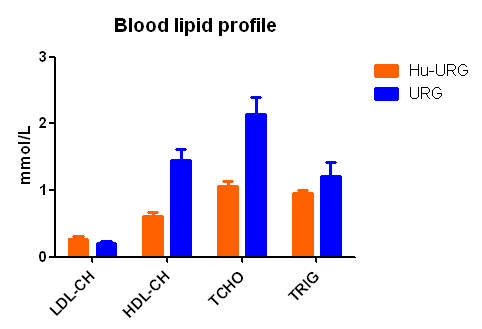
Fig1. The content of blood lipids and related proteins in Hu-URG mice
2. The reconstruction of human liver cells
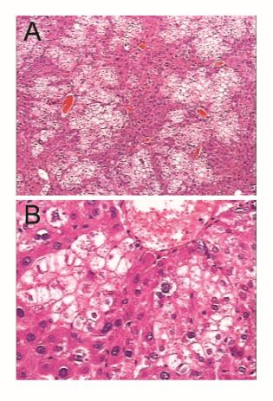
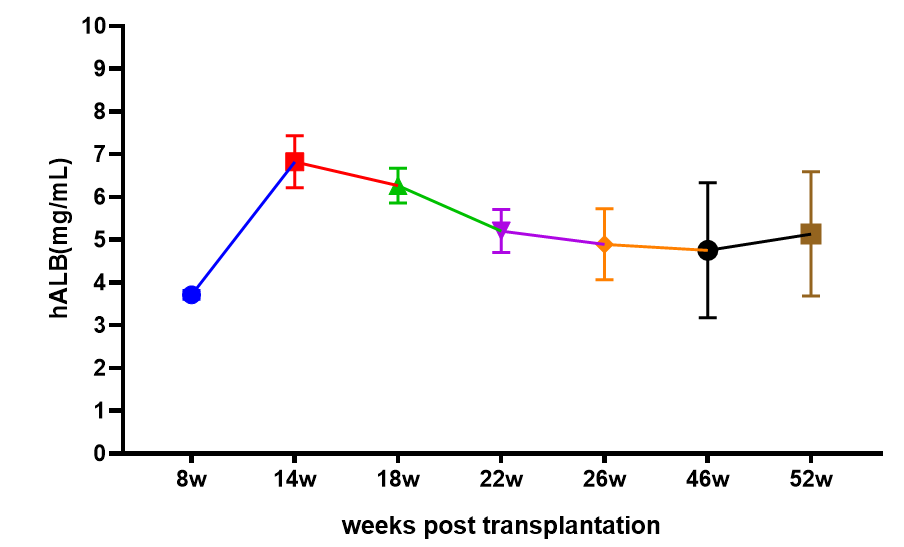
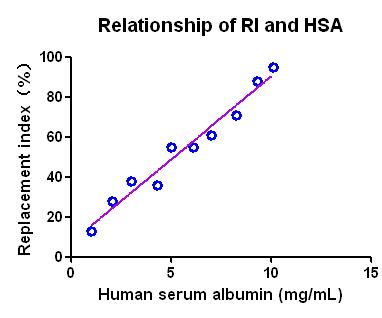
C D
Figure 2. Hu-URG mouse human liver cell reconstruction.
(A, B) HE staining demonstrated successful reconstruction of human liver cells in Hu-URG® mouse liver, with the lighter stained portion being human liver cells; (C) Hu-URG® Peripheral blood human Alb levels.(D) Correlation analysis of Hu-URG® peripheral blood Alb levels with the degree of chimerism in human hepatocytes
3. Analysis of human hepatocyte chimerism in the five lobe region of the liver

Fig3. Chimerism analysis of human hepatocytes in the five lobe areas of the liver of Hu-URG® mice
Results: Immunohistochemical staining of Human Albumin Antibody in different liver lobes of Hu-URG® mice showed that human hepatocytes were uniformly embedded in five lobar areas of the liver.
4. Liver human hepatocyte-specific gene and protein expression analysis

Fig 4. Analysis of liver tissue assay 6 weeks after successful construction of Hu-URG® mice
Notes: Hepatic qRT-PCR analysis expressing human-specific genes; (B,C,D,E) Positive immunohistochemical staining for human Albumin, CK18, CYP3A4, CYP1A2
5. Infection with the human-specific hepatitis B virus (HBV)
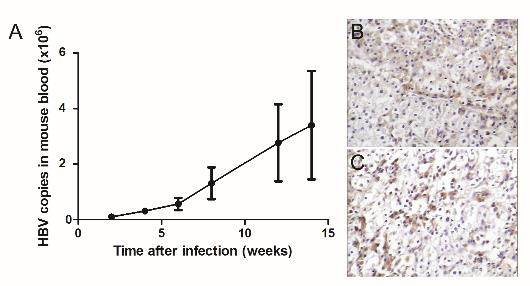
Fig 5. Hu-URG® mice supporting human HBV virus infection
HBV viral titers in the sera of Hu-URG® mice gradually increased with the duration of infection, demonstrating that the HBV virus replicated within the model, and staining was also performed to reveal positive staining for HBV surface and core antigens.
6. In vivo studies of drug metabolism and drug-drug interactions in Hu-URG® mice

Fig 6. Drug metabolism in the liver of Hu-URG® mice more closely resembles that of humans
Note: (A) Rifampicin induces elevation of P450 family CYP enzymes and transporter proteins in Hu-URG® mouse liver; (B) Dextromethophan is more rapidly metabolized to dextrophan in Hu-URG mice.
Examples of HBV infection and drug efficacy studies in Hu-URG mice
1. Hu-URG was used to study the antiviral activity of small molecule compounds in HBV patients after serum infection Potential mechanisms of influence on cccDNA transcription[7]

Fig7. Antiviral activity of Dicoumarol on HBV-infected Hu-URG mice
Hu-URG® mice (n=4/group) were injected intravenously with 50 μL of HBV patient serum (genotype B, 5.12×106 copies/mL). 20 mg/kg Dicoumarol was injected intraperitoneally on every other day for 6 weeks, while a control group was set up. Blood was taken weekly from the orbital venous sinus. The mice were executed after 35 d of drug administration, and liver tissues were collected for analysis. The results showed that the serum Alb of Hu-URG mice was consistently high. It was higher than 3 mg/mL during the 5 weeks of Dicoumarol administration, which was not significantly different from that of the control group.Dicoumarol treatment was effective in decreasing serum HBsAg and HBV DNA levels, as well as decreasing intrahepatic HBV DNA and HBV RNAs levels.
2. Hu-URG mice were used to study the antiviral activity of compound after infection of cultured HBV virus particles and its effect on cccDNA transcription[8]


Fig 8. Antiviral activity of Sphondin against HBV-infected Hu-URG mice
Hu-URG® mice (n=4/group) were injected intravenously with patient serum (genotype B). 8 weeks later, the mice were randomly divided into a control group, a sphondin monotherapy group, and an ETV+sphondin combination group, and were administered and sampled according to the design as shown. The results showed that human Alb in the serum of Hu-URG® mice was consistently at a high level. higher than 3 mg/mL for 6 weeks of the administered treatments alone or in combination, which was not significantly different from the control group. The administration treatments also had no significant effect on body weight. sphondin treatment resulted in a significant reduction in serum HBsAg and HBV DNA. It also significantly reduced intrahepatic total HBV RNA, 3.5 kb RNA, HBsAg and HBx protein levels.
3. Hu-URG was used to investigate HBx enhancement of HBV replication through DDB1-mediated degradation of WDR77 in the liver[9]


Fig9. HBV infection results in decreased WDR77 levels
PHHs were injected into 3-week-old URG® mice (n=3/group) by intrasplenic injection, and serum human Alb was measured by ELISA to assess the implantation and viability of PHHs. The mice were then infected with 2.5 × 108 IU/mL (0.2 mL/each) HBV pellets, and the mice were executed after 8 weeks. The results showed that Hu-URG® mice had high levels of Alb in serum and could be normally infected with HBV, and HBV infection and HBx expression significantly reduced the protein level of WDR77 of Hu-URG®, which in turn limited cccDNA transcription and HBV replication.
4. Hu-URG is used to investigate potential targets for drug treatment of HBV[10]
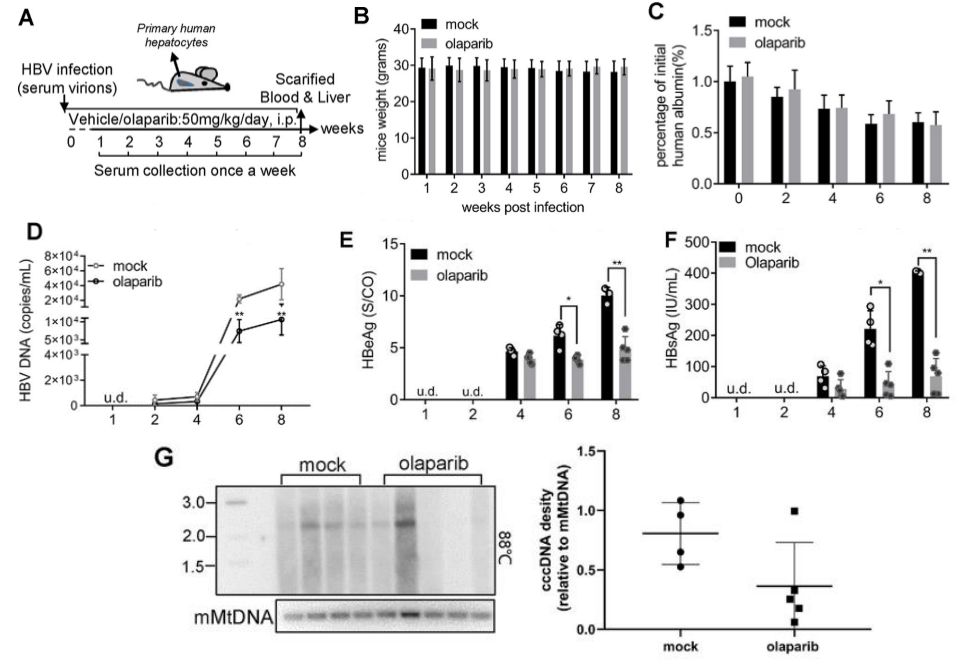
Fig10. Decreased HBV cccDNA in Hu-URG mice treated with PARP1 inhibitor (olaparib)
Nine male mice (n=4 male mice in mock group, n=5 male mice in olaparib group) were injected intravenously with 50 μL (5×108 copies/mL) of HBV patient serum. The diluted PARP1 inhibitor olaparib was administered intraperitoneally at a dose of 50 mg/kg per day 12 h after HBV infection. results showed that there was no significant difference in body weight and serum human Alb levels between the DMSO and olaparib groups for Hu-URG®. Administration resulted in a significant reduction in serum HBV DNA, HBsAg and HBeAg levels. Intrahepatic HBV cccDNA levels were reduced by half. These data suggest that olaparib reduces HBV replication and cccDNA formation in vivo.
5. Hu-URG was used to study the pathway of IFN-α-mediated HDAC3 inhibition of HBV transcription and replication[11]

Fig11. HDAC3 mediates inhibition of HBV transcription and replication.
Primary human hepatocytes (PHH) were transplanted into 3-week-old (n=5 each group, male and female) URG® mice to construct the resulting Hu-URG® mice. The Hu-URG® mice were then infected with 5.0 × 108 IU/mL (0.2 mL/mouse) HBV particles from HepAD38 cell supernatant. The results showed that human liver chimeric mice had a high level of Alb in serum and could be normally infected with HBV. HDAC3 mRNA levels in HBV-infected Hu-URG® mice were significantly lower than those in the control group, and Western blot analysis confirmed that the level of histone H4K8 2-hydroxyisobutyrylation was obviously enhanced. -URG® mouse livers with HBV cccDNA, suggesting that HDAC3 is anchored to the HBV cccDNA chromosome. In this study, we found that IFN-α inhibits HBV transcription and replication by promoting HDAC3-mediated de-2-hydroxyisobutyrylation of histone H4K8 on the hepatic HBV cccDNA chromosome.
Hu-URG® Mice Applications
1. Hu-URG® mice can be used for human-specific liver disease, drug safety assessment and human-specific liver metabolism enzyme-related studies
2. HBV, HCV infection and antiviral activity signaling pathway research
3. Drug metabolism and pharmacokinetics, efficacy studies
4. Stem cell research
5. Gene therapy
References
1. Song X J, et al. A Mouse Model of Inducible Liver Injury Caused by Tet-On Regulated Urokinase for Studies of Hepatocyte Transplantation. Am J Pathol. 2009, 175(5):1975-1983.
2. Du Y, et al. Human hepatocytes with drug metabolic function induced from fibroblasts by lineage reprogramming. Cell Stem Cell. 2014, 14(3):394-403.
3. Azuma, H. et al. Robust expansion of human hepatocytes in Fah-/-/Rag2-/-/Il2rg-/- mice. Nat Biotechnol. 2007, 25(8):903-910.
4. Bissig KD, et al. Human liver chimeric mice provide a model for hepatitis B and C virus infection and treatment. J Clin Invest. 2010, 120(3):924-930.
5. Xu D, et al. Chimeric TK-NOG mice: a predictive model for cholestatic human liver toxicity. J Pharmacol Exp Ther. 2015, 352(2):274-280.
6. Foquet L, et al. Successful Engraftment of Human Hepatocytes in uPA-SCID and FRG® KO Mice. Methods Mol Biol. 2017, 1506:117-130.
7. Cheng ST, et al. Dicoumarol, an NQO1 inhibitor, blocks cccDNA transcription by promoting degradation of HBx. J Hepatol. 2021, 74:522-534.
8. Ren F, et al. Sphondin efficiently blocks HBsAg production and cccDNA transcription through promoting HBx degradation. J Med Virol. 2023, 95:e28578.
10. Yuan H, et al. HBx represses WDR77 to enhance HBV replication by DDB1-mediated WDR77 degradation in the liver. Theranostics. 2021, 11(17):8362-8378.
11. Chen Y, et al. DNA Repair Factor Poly (ADP-Ribose) Polymerase 1 Is a Proviral Factor in Hepatitis B Virus Covalently Closed Circular DNA Formation. J Virol. 2022, 96(13):e0058522.
12. Zhao LN, et al. IFN-α inhibits HBV transcription and replication by promoting HDAC3-mediated de-2-hydroxyisobutyrylation of histone H4K8 on HBV cccDNA minichromosome in liver. Acta Pharmacol Sin. 2022, 43(6):1484-1494.

 animalmodel@vital-bj.com
animalmodel@vital-bj.com +8610-84928167
+8610-84928167